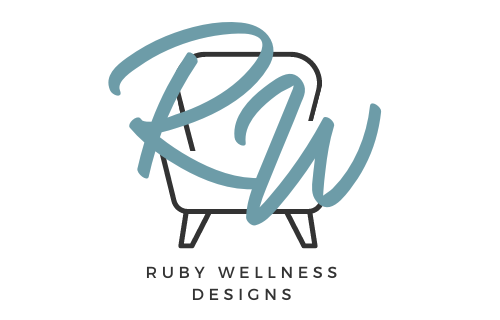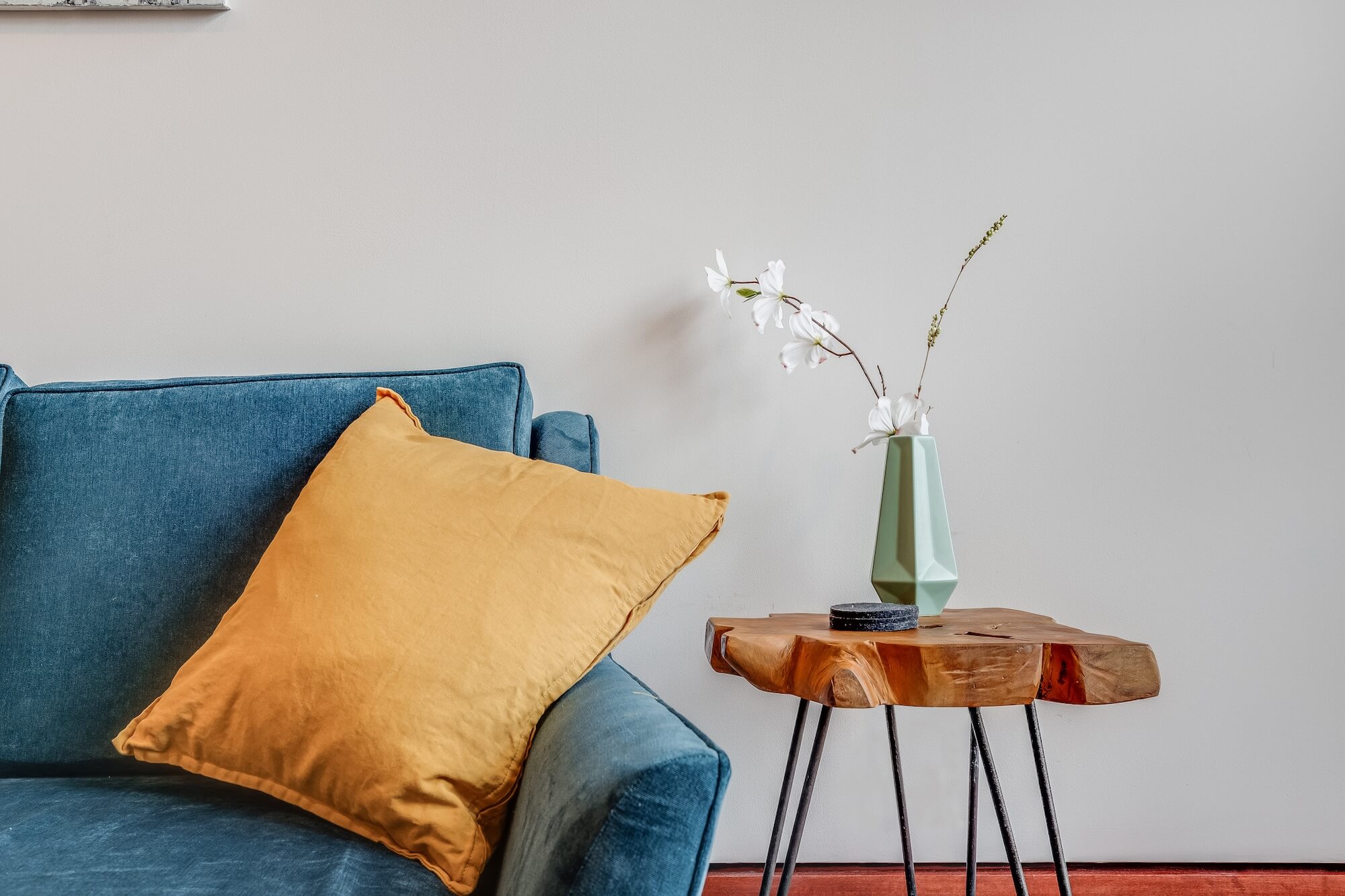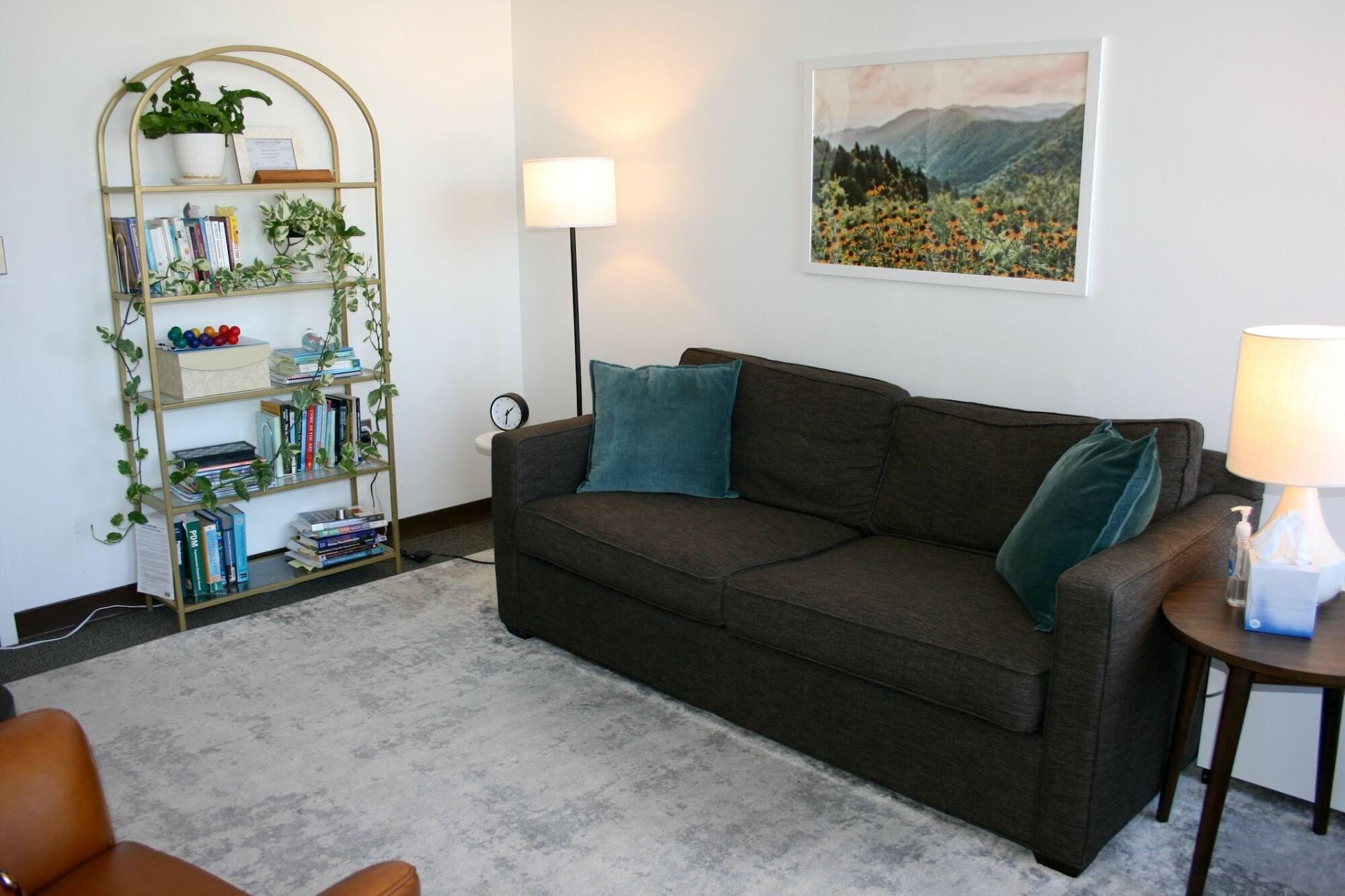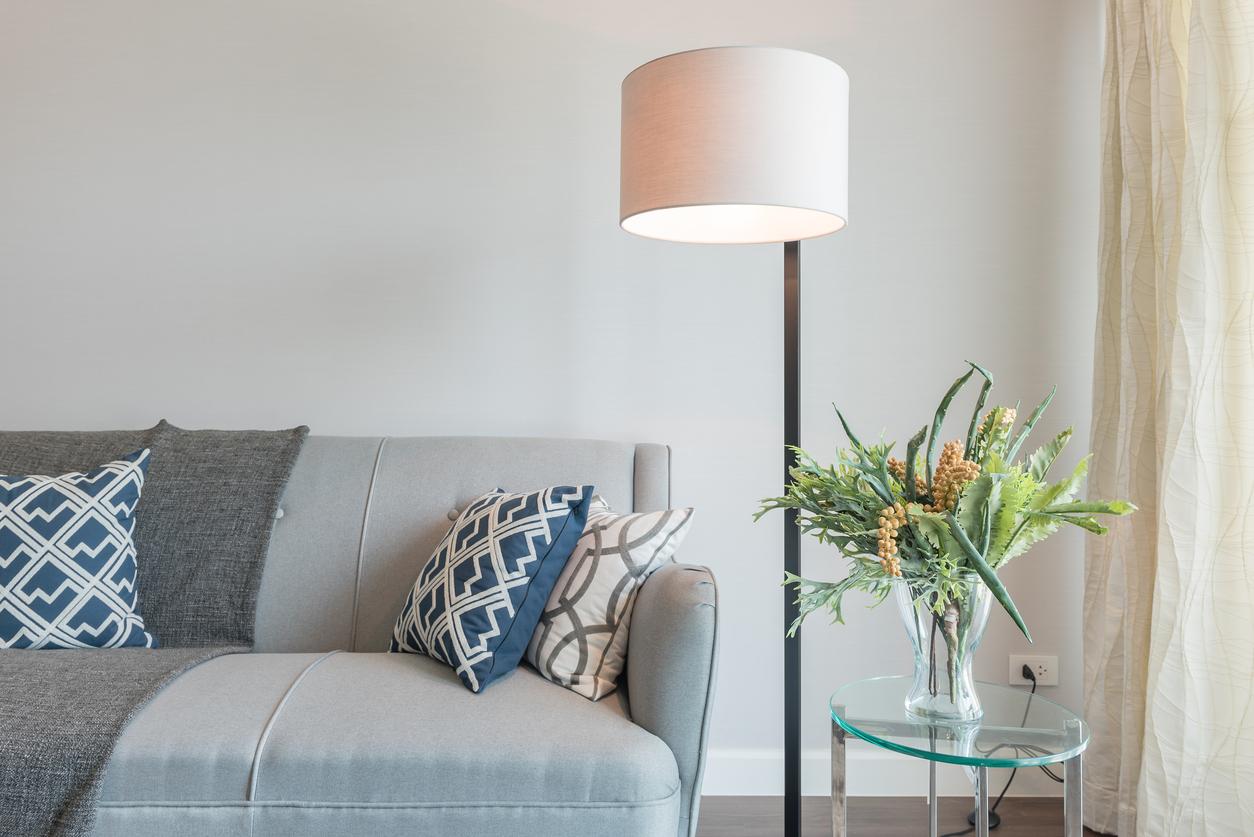Calming Therapist Office Decor
Calming Therapist Office Decor
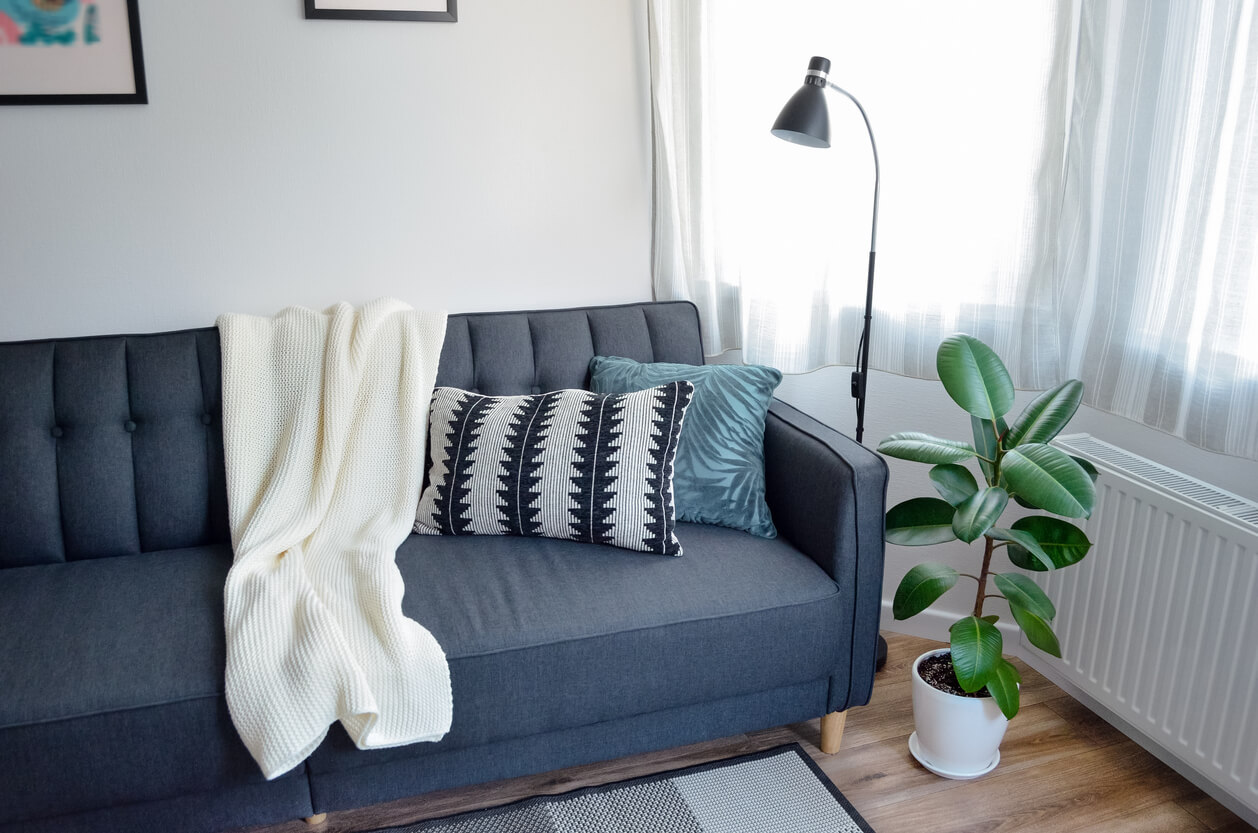
The million dollar question when decorating a therapist office: what makes a space feel calm? How can we select calming therapist office decor? We want our clients to walk into our offices and feel at ease, comfortable, and read to talk. Of course there are many other factors that contribute to this sense of calm and trust, chief among them the therapeutic alliance and therapeutic frame. But I believe our office decor can help facilitate both of these. An added bonus? If we feel calm in our counseling office space, we may have more emotional and mental bandwidth to hold our patients.
Here are some interior design ideas to help achieve a calm, therapeutic atmosphere:
Choose colors found in nature.
Try a mini guided imagery exercise for yourself – where is a place that you feel calm or at peace? Many people choose the beach for this kind of exercise, and for good reason. Now, picture a relaxing beach scene and write down the colors you see: a variety of blues, beige, light browns or creams, sage greens, some light grays. Or maybe you picked a sunset scene. What colors do you see? Soft blues, creams, subtle yellows and muted pinks. If the color can be found easily in a calming nature scene, it’s a good bet for a calming therapist office.
Consider the intensity of the color: When picking calming colors for your space, choose colors with tone, shade or tint variations rather than using the pure hue. Instead of using a kelly green, go for a more sophisticated olive green. For a full explanation of color variations, read here. It’s rare to find the brightest hue of a color in a calm nature scene – let nature guide you.
Add in natural elements
When choosing your furniture, accent pieces, or decor items, incorporate natural materials such as wood or stone (e.g. wood side table or bookshelf, marble accent table or lamp base). These elements ground the space and bring in a sense of warmth and connection with nature.
Plants are often as close as we can get to having nature directly in our offices. Adding greenery creates visual interest, adds color, and contributes to a peaceful energy. Try low-maintenance plants like pothos, snake plants, or ferns.
Another way to add natural elements: through your artwork selection. Choose artwork that reflects nature, like serene landscapes or abstract pieces with flowing lines and soft colors. Prints of nature scenes, foliage, mountains, beaches, or forests can contribute to a sense of tranquility.
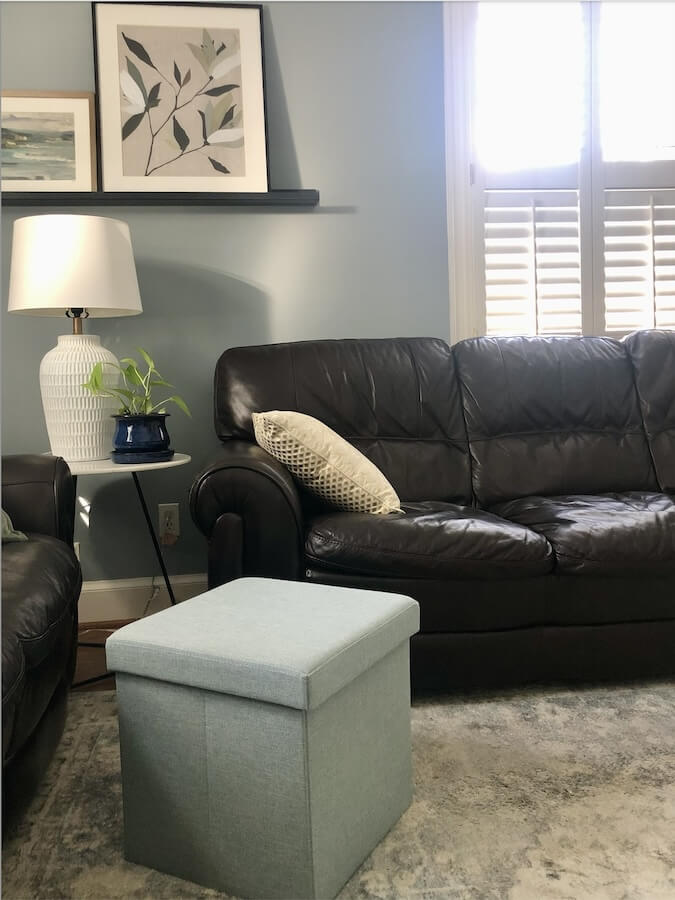
This office uses colors found in nature (blue, light greens, browns), has a live plant, and displays wall art that reflects nature.
Add in soft textures
Combine soft fabrics like wool, linen, and cotton to create a tactile environment that’s pleasant to the touch. Soft rugs, textured cushions, and cozy throws add layers of comfort. Many of my patients actually fidget with or stroke the throw pillows or throw blankets in my office during sessions.
For visual interest, you can balance softer textures with warmer materials like leather, velvet, or wood, to create a fuller tactile experience (e.g. a soft cream throw pillow on a cognac leather armchair).
Keep things clutter free
Keeping your therapy office space open, airy and clutter free can go a long way in creating a sense of calm. When deciding on how many accent pieces or decor accessories to add, remind yourself that usually less is more. Keeping shelves and table tops organized and clear contributes to a more calm environment. I love using pretty storage boxes to help organize clutter from paperwork or play therapy toys.
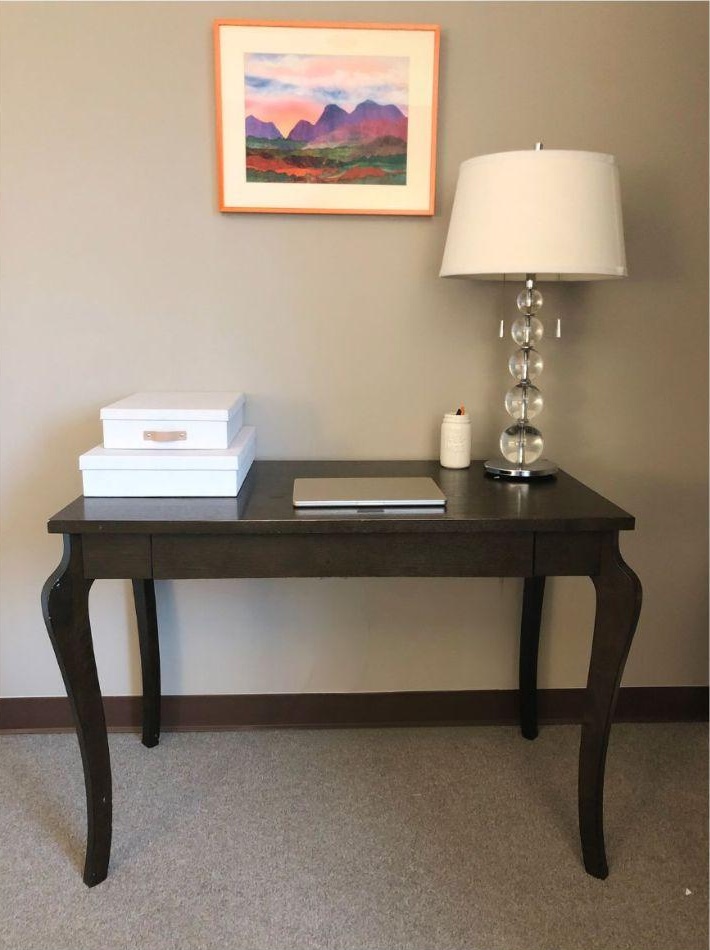
These light gray storage boxes hide paperwork clutter, keeping the desk organized and the space calm.
Keep an open layout
A spacious layout with open, breathable spaces allows for a sense of freedom and relaxation. Avoid overcrowding rooms with too much furniture. The general rule of thumb is to make sure there is at least 18” of space between large furniture items.
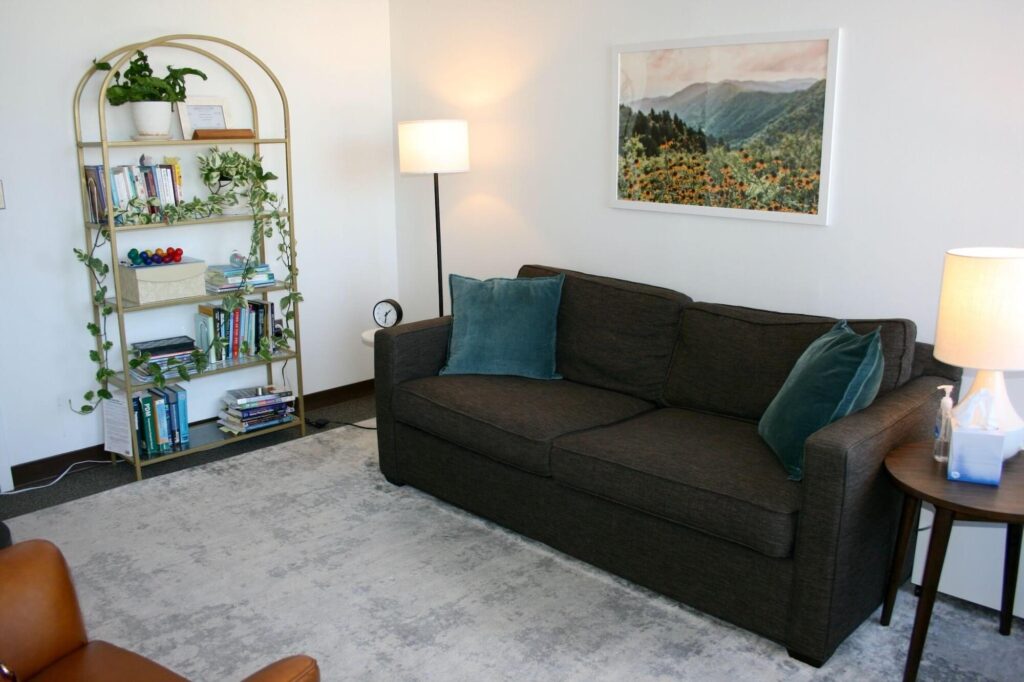
The open, clutter free space helps facilitate a sense of calm.
Use natural light and soft lighting
If you’re choosing between office spaces, go for the one with the most natural light. Natural light can improve mood and create a serene atmosphere. If you need more lighting, or didn’t land an office with great natural light, choose warm, soft lighting rather than harsh, bright lights. Consider floor lamps, table lamps, or dimmable ceiling lights to control the ambiance. I never use the overhead light in my office – it’s too bright and industrial. Make sure you use lightbulbs that add enough light while still giving off a warm, calm glow.
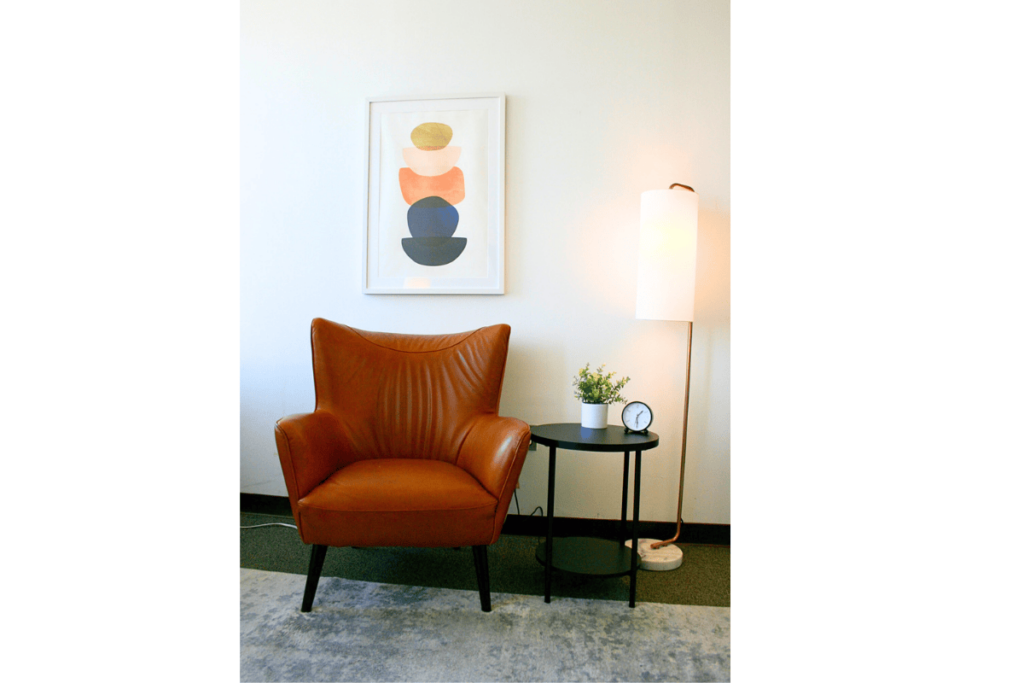
Natural lighting and warm lamp light help create a sense of calm in this office space.
By focusing on elements found in nature —nature inspired colors, natural materials, soft lighting, open space, and minimal clutter—you can create a space that feels like a peaceful retreat, helping you and your clients ease in to the therapeutic work at hand.
Need personalized help turning your office space into a calm, therapeutic environment? Tell me more about your project here.
